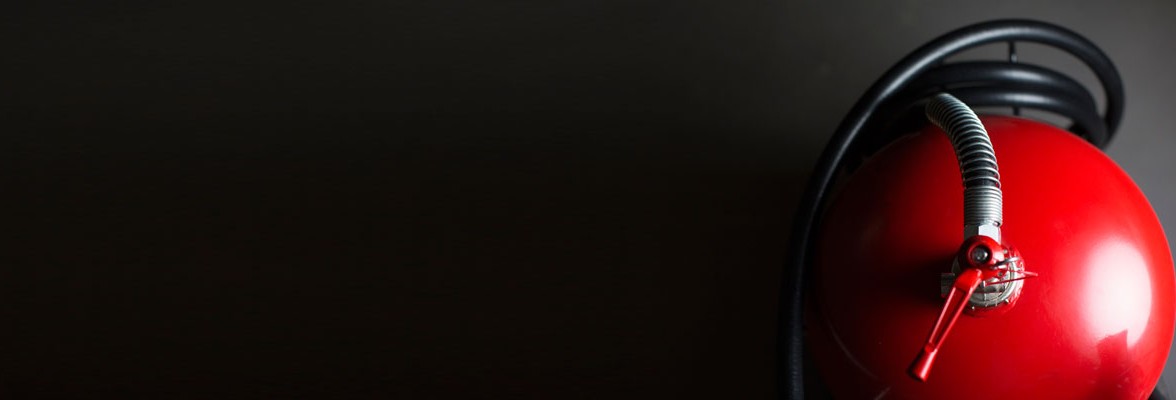YOUR CART
- No products in the cart.
Subtotal:
$0.00
BEST SELLING PRODUCTS

Fire extinguishers are your building’s first line of defense when a fire breaks out. Some models require recharging periodically to support optimal performance at maximum capacity. Regular inspection and testing are also necessary to ensure your fire extinguisher works when you need it the most.
Learn how to handle the recharge process so your extinguishers are reliable and ready for action below.
Many fire extinguisher models are disposable, meaning they are single-use and cannot be reused. Rechargeable fire extinguishers allow you to refill the extinguishing agent after use and utilize the same extinguisher in the future.
Rechargeable models typically have a lifespan of about six years before they need to be replaced. Proper maintenance and refilling are crucial for ensuring the extinguishers at your job site or facility are prepared to take on an emergency fire situation.
The National Fire Protection Association (NFPA) outlines several specific situations when a fire extinguisher needs to be recharged in the Standard for Portable Fire Extinguishers guidelines. These include:
Sticking closely to these guidelines ensures that your rechargeable fire extinguisher is prepared to do its job should a fire break out. While it may seem tedious at the moment, recharging fire extinguishers can save lives and prevent property damage — this task is not something you want to neglect. Following recharging guidelines is especially vital in the context of schools, hospitals, government facilities and other highly trafficked areas.

Once you’ve determined it’s time to recharge your fire extinguisher, you need to figure out where you can do so. Performing the recharging process on your own is not recommended, as it is a complicated procedure that can put you and others at risk if you aren’t using the proper equipment or do not have adequate training.
In some states, like California, it is illegal to recharge a fire extinguisher on your own without a certificate of registration from the State Fire Marshal. To avoid breaking the law, you should always seek out trained professionals in order to refill any extinguishers your facility uses, regardless of the type.
The two primary places you can find these professionals are certified fire equipment service companies and your local fire department. You can schedule an appointment at most locations to have your extinguishers recharged, so long as they have access to the appropriate equipment and their staff are trained to handle the recharging process.
Limiting recharging services to these certified locations ensures that fire extinguishers are refilled according to safety regulations at the local, state and federal levels. An expert will help ensure recharging is done with an understanding of best practices and relevant regulations. DIY solutions can be dangerous, especially if you were to recharge with the wrong extinguishing agent, which can make fires worse.
Now that you’ve identified a location where you can get your fire extinguisher recharged, you can leave the work to the professionals. Using specialized equipment, the extinguisher technician will:
Once the recharge process is complete, the technician will return the fire extinguisher, and you are free to use it whenever it is needed.
Below, you’ll find answers to some of the most common questions people ask about fire extinguisher recharges.
Failing to recharge your facility’s fire extinguishers could mean your equipment is less equipped to handle a fire emergency. If you do not have enough extinguishing agents, you may not be able to put out a fire, leading to more extensive damage and greater safety risks. Never delay recharging your extinguishers.
Having a professional recharge your fire extinguisher typically takes less than half an hour. The process is relatively quick, especially if you work with an experienced technician who understands the best practices for your model.
The cost of recharging your fire extinguishers will depend on several factors, including the model’s size and type. Specialized extinguishers may cost more to recharge than simpler options. Your location and where you go to recharge your extinguisher can also impact your final costs.
If your fire extinguisher is within its recommended service life and in good condition with no visible signs of damage, recharging is typically a suitable and economical option. If your extinguisher has visible signs of wear and tear or has lost pressure despite being recharged, it is likely time to replace your existing model with a newer option.
If your building is in need of new or upgraded fire protection tools, National Fire Supply is here to help. We have been certified by the National Association of Fire Equipment Distributors (NAFED), and our skilled technicians are here to guide you through our robust suite of equipment and components.
Our inventory includes fire extinguisher recharge adapters, sprinkler parts, fire hoses and various types of fire extinguishers so you can find the best equipment for your needs.